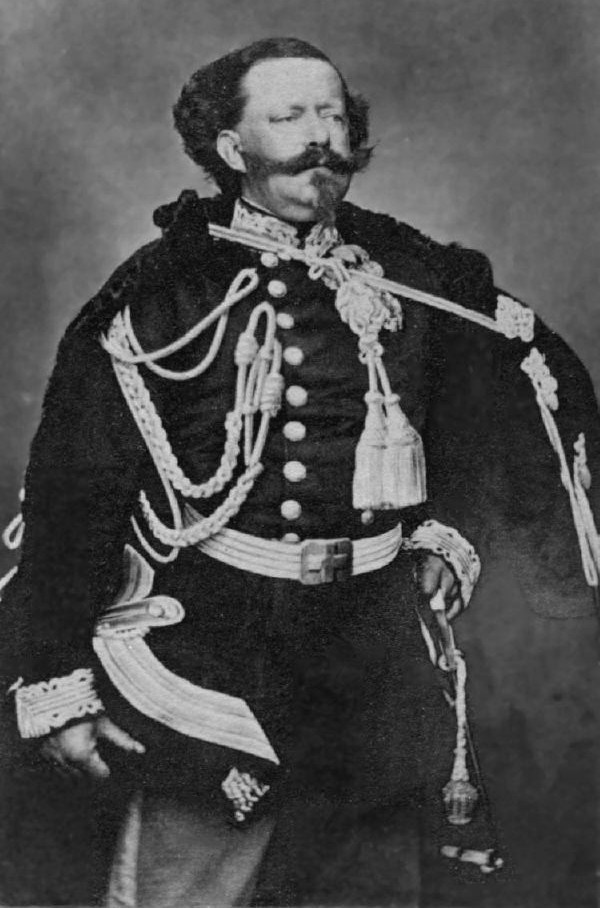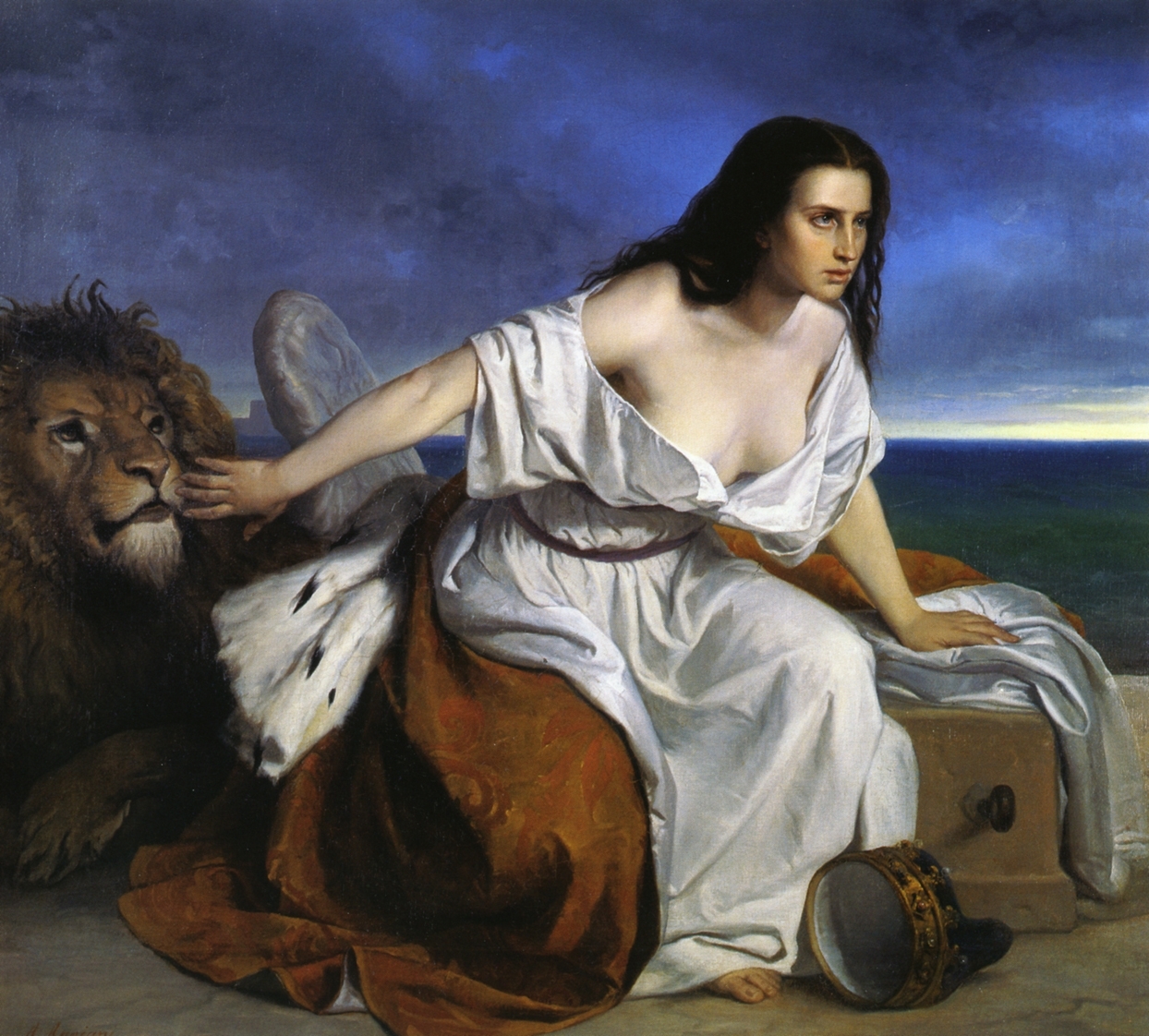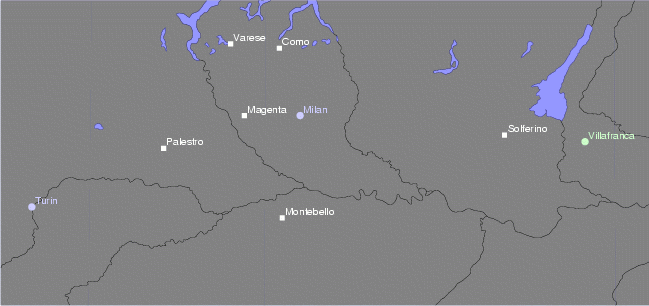|
Giovanni Corti
Giovanni Corti (14 April 1797 - 12 December 1868) was an Italian priest who became Bishop of Mantua. He supported the cause of Italian reunification at a time when his diocese was under Austrian rule, although he defended the temporal powers of the Pope. Early years Giovanni Corti was born on 14 April 1796 in Pomerio, Como. He was ordained a priest around 1820. In 1838 the old parish of Agliate was divided into two, one based on Besana in Brianza and the other on Carate Brianza. The new parish of Besana was formally inaugurated on 25 April 1838, and Corte was made provost. Corti twice declined a nomination as bishop before finally accepting in 1846. On 7 October 1846 he was selected Bishop of Mantova, Italy. He was confirmed in this position on 12 April 1847 and ordained on 25 April 1847. He handed over his parish to don G. Battista Mojana. He was consecrated by Cardinal Altieri on 19 January 1850. Bishop Corti was a popular bishop, and when he endorsed union with Italy this ... [...More Info...] [...Related Items...] OR: [Wikipedia] [Google] [Baidu] |
Bishop Of Mantua
The Diocese of Mantua ( la, Dioecesis Mantuana) is a Latin Church ecclesiastical territory or diocese of the Catholic Church in Italy. The diocese existed at the beginning of the 8th century, though the earliest attested bishop is Laiulfus (827). It has been a suffragan of the Archdiocese of Milan since 1819. The cathedra of its bishop is in the Cathedral of S. Pietro Apostolo. Mantua also contains the Basilica di Sant'Andrea di Mantova. The current Bishop of Mantua is Gianmarco Busca, appointed by Pope Francis on June 3, 2016. The bishops emeriti are Egidio Caporello and Roberto Busti. In 2013, there was one priest in the diocese for every 1,660 Catholics; in 2016, there was one priest for every 1,763 Catholics. The Diocese of Mantua is a suffragan diocese in the ecclesiastical province of the metropolitan Archdiocese of Milan. Bishops of Mantova to 1200 :... *Laiulfus (attested 827) :... *Egilulf (attested 881) :... *Patrus (attested 945) :... *Wilielmus (attested 962‚ ... [...More Info...] [...Related Items...] OR: [Wikipedia] [Google] [Baidu] |
Reliquary
A reliquary (also referred to as a ''shrine'', by the French term ''ch√Ęsse'', and historically including ''wikt:phylactery, phylacteries'') is a container for relics. A portable reliquary may be called a ''fereter'', and a chapel in which it is housed a ''feretory''. Relics may be the purported or actual physical remains of saints, such as bones, pieces of clothing, or some object associated with saints or other religious figures. The authenticity of any given relic is often a matter of debate; it is for that reason, some churches require documentation of the relic's provenance. Relics have long been important to Buddhism, Buddhists, Christianity, Christians, Hinduism, Hindus and to followers of many other religions. In these cultures, reliquaries are often presented in shrines, churches, or temples to which the faithful make pilgrimages in order to gain blessings. The term is sometimes used loosely of containers for the body parts of non-religious figures; in particular the ... [...More Info...] [...Related Items...] OR: [Wikipedia] [Google] [Baidu] |
1797 Births
Events January–March * January 3 – The Treaty of Tripoli, a peace treaty between the United States and Ottoman Tripolitania, is signed at Algiers (''see also'' 1796). * January 7 – The parliament of the Cisalpine Republic adopts the Italian green-white-red tricolour as the official flag (this is considered the birth of the flag of Italy). * January 13 – Action of 13 January 1797, part of the War of the First Coalition: Two British Royal Navy frigates, HMS ''Indefatigable'' and HMS ''Amazon'', drive the French 74-gun ship of the line '' Droits de l'Homme'' aground on the coast of Brittany, with over 900 deaths. * January 14 – War of the First Coalition – Battle of Rivoli: French forces under General Napoleon Bonaparte defeat an Austrian army of 28,000 men, under ''Feldzeugmeister'' J√≥zsef Alvinczi, near Rivoli (modern-day Italy), ending Austria's fourth and final attempt to relieve the fortress city of Mantua. * January 26 – Th ... [...More Info...] [...Related Items...] OR: [Wikipedia] [Google] [Baidu] |
Catholic Church In Italy
, native_name_lang = it , image = San_Giovanni_in_Laterano_-_Rome.jpg , imagewidth = 250px , alt = , caption = Archbasilica of Saint John Lateran in Rome, the ''cathedra'' seat of the Pope as Primate of Italy. , abbreviation = , type = National polity , main_classification = Catholic , orientation = Latin , scripture = Bible , theology = Catholic theology , polity = Episcopal , governance = Episcopal Conference of Italy , structure = , leader_title = Pope , leader_name = Francis , leader_title1 = President , leader_name1 = Matteo Maria Zuppi , leader_title2 = Primate , leader_name2 = Pope Francis , leader_title3 = Apostolic Nuncio , leader_name3 = Emil Paul Tscherrig , fellowships_type = , fellowships = , fellowships_type1 = , fellowships1 = , ... [...More Info...] [...Related Items...] OR: [Wikipedia] [Google] [Baidu] |
Victor Emanuel II
en, Victor Emmanuel Maria Albert Eugene Ferdinand Thomas , house = Savoy , father = Charles Albert of Sardinia , mother = Maria Theresa of Austria , religion = Roman Catholicism , image_size = 252px , succession1 = King of Sardinia and Duke of Savoy , reign1 = 23 March 1849 ‚Äď 17 March 1861 , predecessor1 = Charles Albert , reg-type1 = , regent1 = , signature = Signatur Viktor Emanuel II..PNG Victor Emmanuel II ( it, Vittorio Emanuele II; full name: ''Vittorio Emanuele Maria Alberto Eugenio Ferdinando Tommaso di Savoia''; 14 March 1820 ‚Äď 9 January 1878) was King of Sardinia from 1849 until 17 March 1861, when he assumed the title of King of Italy and became the first king of an independent, united Italy since the 6th century, a title he held until his death in 1878. Borrowing from the old Latin title ''Pater Patriae'' of the Roman emperors, the Italians gave him the epithet of '' Father of the Fatherland'' ( it, Padr ... [...More Info...] [...Related Items...] OR: [Wikipedia] [Google] [Baidu] |
Third Italian War Of Independence
The Third Italian War of Independence ( it, Terza Guerra d'Indipendenza Italiana) was a war between the Kingdom of Italy and the Austrian Empire fought between June and August 1866. The conflict paralleled the Austro-Prussian War and resulted in Austria conceding the region of Venetia (present-day Veneto, Friuli and the city of Mantua, the last remnant of the ''Quadrilatero'') to France, which were later annexed by Italy after a plebiscite. Italy's acquisition of this wealthy and populous territory represented a major step in the Unification of Italy. Background Victor Emmanuel II of Savoy had been proclaimed King of Italy on 17 March 1861 but did not control Venetia or the much-reduced Papal States. The situation of the , a later Italian term for part of the country under foreign domination that literally meaning ''unredeemed'', was an unceasing source of tension in the domestic politics of the new kingdom and a cornerstone of its foreign policy. The first attempt to seize ... [...More Info...] [...Related Items...] OR: [Wikipedia] [Google] [Baidu] |
Kingdom Of Italy
The Kingdom of Italy ( it, Regno d'Italia) was a state that existed from 1861, when Victor Emmanuel II of Kingdom of Sardinia, Sardinia was proclamation of the Kingdom of Italy, proclaimed King of Italy, until 1946, when civil discontent led to an 1946 Italian institutional referendum, institutional referendum to abandon the monarchy and form the modern Italy, Italian Republic. The state resulted from a decades-long process, the ''Italian unification, Risorgimento'', of consolidating the different states of the Italian Peninsula into a single state. That process was influenced by the House of Savoy, Savoy-led Kingdom of Sardinia, which can be considered Italy's legal Succession of states, predecessor state. Italy Third Italian War of Independence, declared war on Austrian Empire, Austria in alliance with Kingdom of Prussia, Prussia in 1866 and received the region of Veneto following their victory. Italian troops Capture of Rome, entered Rome in 1870, ending Papal States, more tha ... [...More Info...] [...Related Items...] OR: [Wikipedia] [Google] [Baidu] |
Kingdom Of Sardinia
The Kingdom of Sardinia,The name of the state was originally Latin: , or when the kingdom was still considered to include Corsica. In Italian it is , in French , in Sardinian , and in Piedmontese . also referred to as the Kingdom of Savoy-Sardinia, Piedmont-Sardinia, or Savoy-Piedmont-Sardinia during the Savoyard period, was a state in Southern Europe from the early 14th until the mid-19th century. The Kingdom was a member of the Council of Aragon and initially consisted of the islands of Corsica and Sardinia, sovereignty over both of which was claimed by the Papacy, which granted them as a fief, the ("kingdom of Sardinia and Corsica"), to King James II of Aragon in 1297. Beginning in 1324, James and his successors conquered the island of Sardinia and established ''de facto'' their ''de jure'' authority. In 1420, after the Sardinian‚ÄďAragonese war, the last competing claim to the island was bought out. After the union of the crowns of Aragon and Castile, Sardinia becam ... [...More Info...] [...Related Items...] OR: [Wikipedia] [Google] [Baidu] |
Second Italian War Of Independence
The Second Italian War of Independence, also called the Franco-Austrian War, the Austro-Sardinian War or Italian War of 1859 ( it, Seconda guerra d'indipendenza italiana; french: Campagne d'Italie), was fought by the Second French Empire and the Savoyard Kingdom of Sardinia against the Austrian Empire in 1859 and played a crucial part in the process of Italian Unification. A year prior to the war, in the Plombières Agreement, France agreed to support Sardinia's efforts to expel Austria from Italy in return for territorial compensation in the form of the Duchy of Savoy and the County of Nice. The two states signed a military alliance in January 1859. Sardinia mobilised its army on 9 March 1859, and Austria mobilized on 9 April. On 23 April, Austria delivered an ultimatum to Sardinia demanding its demobilization. Upon Sardinia's refusal, the war began on 26 April. Austria invaded Sardinia three days later, and France declared war on Austria on 3 May. The Austrian invasion wa ... [...More Info...] [...Related Items...] OR: [Wikipedia] [Google] [Baidu] |
Benvenuto Cellini
Benvenuto Cellini (, ; 3 November 150013 February 1571) was an Italian goldsmith, sculptor, and author. His best-known extant works include the ''Cellini Salt Cellar'', the sculpture of ''Perseus with the Head of Medusa'', and his autobiography, which has been described as "one of the most important documents of the 16th century." Biography Youth Benvenuto Cellini was born in Florence, in present-day Italy. His parents were Giovanni Cellini and Maria Lisabetta Granacci. They were married for 18 years before the birth of their first child. Benvenuto was the second child of the family. The son of a musician and builder of musical instruments, Cellini was pushed towards music, but when he was fifteen, his father reluctantly agreed to apprentice him to a goldsmith, Antonio di Sandro, nicknamed Marcone. At the age of 16, Benvenuto had already attracted attention in Florence by taking part in an affray with youthful companions. He was banished for six months and lived in Siena, wher ... [...More Info...] [...Related Items...] OR: [Wikipedia] [Google] [Baidu] |
Franz Joseph I Of Austria
Franz Joseph I or Francis Joseph I (german: Franz Joseph Karl, hu, Ferenc J√≥zsef K√°roly, 18 August 1830 ‚Äď 21 November 1916) was Emperor of Austria, King of Hungary, and the Grand title of the Emperor of Austria, other states of the Habsburg monarchy from 2 December 1848 until his death on 21 November 1916. In the early part of his reign, his realms and territories were referred to as the Austrian Empire, but were reconstituted as the dual monarchy of the Austro-Hungarian Empire in 1867. From 1 May 1850 to 24 August 1866, Franz Joseph was also President of the German Confederation. In December 1848, Franz Joseph's uncle Ferdinand I of Austria, Emperor Ferdinand abdicated the throne at Olomouc, as part of Minister President Felix zu Schwarzenberg's plan to end the Revolutions of 1848 in Hungary. Franz Joseph then acceded to the throne. Largely considered to be a reactionary, he spent his early reign resisting constitutionalism in his domains. The Austrian Empire was forced to c ... [...More Info...] [...Related Items...] OR: [Wikipedia] [Google] [Baidu] |
Jesus
Jesus, likely from he, ◊ô÷Ķ◊©◊Ā◊ē÷ľ◊Ę÷∑, translit=YńďŇ°Ňęa Ņ, label=Hebrew/Aramaic ( AD 30 or 33), also referred to as Jesus Christ or Jesus of Nazareth (among other names and titles), was a first-century Jewish preacher and religious leader; he is the central figure of Christianity, the world's largest religion. Most Christians believe he is the incarnation of God the Son and the awaited Messiah (the Christ) prophesied in the Hebrew Bible. Virtually all modern scholars of antiquity agree that Jesus existed historically. Research into the historical Jesus has yielded some uncertainty on the historical reliability of the Gospels and on how closely the Jesus portrayed in the New Testament reflects the historical Jesus, as the only detailed records of Jesus' life are contained in the Gospels. Jesus was a Galilean Jew who was circumcised, was baptized by John the Baptist, began his own ministry and was often referred to as "rabbi". Jesus debated with fellow Jews on ho ... [...More Info...] [...Related Items...] OR: [Wikipedia] [Google] [Baidu] |







